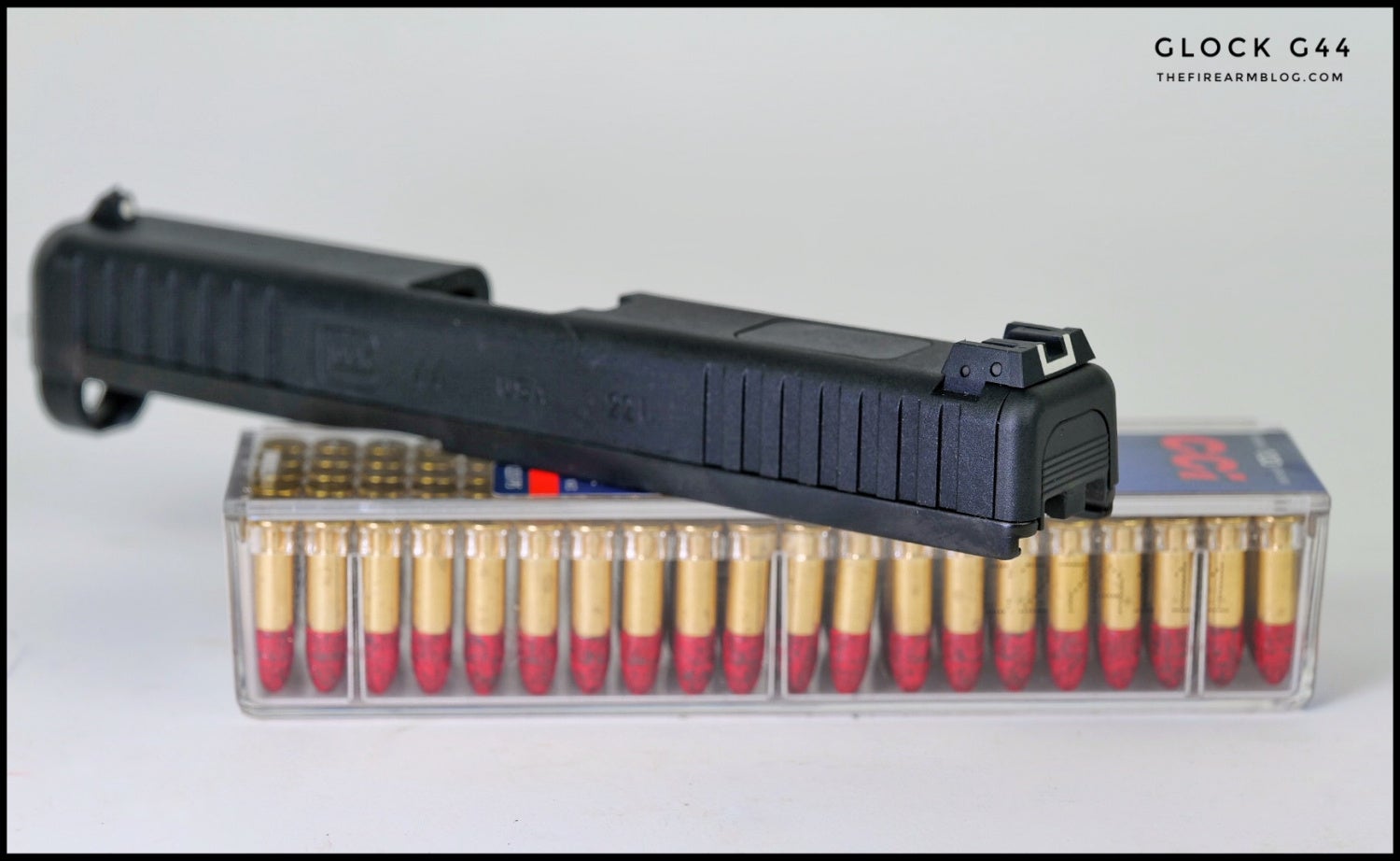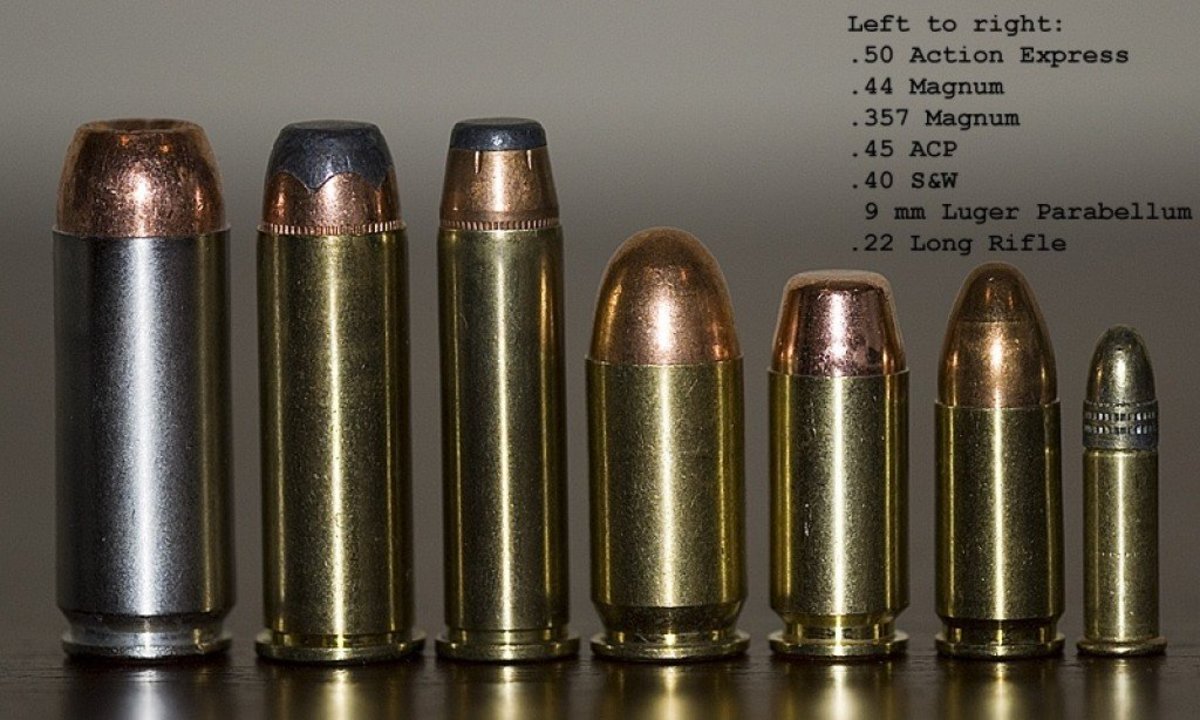Glock Bullet Size - The .40 S&W is a rimless pistol cartridge developed jointly by American firearms manufacturers Smith & Wesson and Winchester in the 1990s.
The .40 S&W was developed as a law-enforcement cartridge designed to duplicate the performance of the low-velocity Federal Bureau of Investigation (FBI) 10 mm auto cartridge, which could be reloaded into medium-frame (9 mm size) semi-automatic handguns. . It uses 0.40 inch (10 mm) diameter bullets weighing 105 to 200 grains (6.8 to 13.0 g).
Glock Bullet Size

This section requires additional references for review. Please help improve this article by adding references to reliable sources. Non-original material can be challenged and removed. Find sources: ".40 S&W" – News · Newspapers · Books · Scholar · JSTOR (August 2021 ) (Learn more about how and what to remove this template message)
Best 10mm Ammo Of 2022
After an FBI shooting in Miami in 1986 killed two FBI special agents and wounded five others, the FBI began the process of testing 9×19mm Parabellum and .45 ACP ammunition. A semi-automatic pistol.
The semi-automatic pistol offered two advantages over the revolver: increased ammunition capacity and increased ease of reloading during firefights. The FBI is satisfied with the performance of its .38 Special +P 158 gr (10.2 g) Lead Semi-Wadcutter Hollowpoint (LSWCHP) cartridge ("FBI Load") based on decades of reliable performance. Ammunition for the new semi-automatic pistol had to provide terminal performance equal to or better than the .38 Special FBI load. The FBI developed a series of experimental-based tests involving eight test EVs that they believed would reasonably replicate the situations FBI agents typically encounter in shooting incidents.
During the testing of the 9×19mm and .45 ACP ammunition, John Hall, unit chief of the FBI's Firearms Training Unit, decided to include tests of his own Colt Delta Elite 10mm semi-automatic and individual hand-loaded 10mm auto cartridges. Ammunition. FBI testing revealed that the 170–180 gr (11.0–11.7 g) JHP 10 mm bullet achieved the desired terminal performance between 900–1,000 ft/s (270–300 m/s) without the heavy recoil associated with conventional 10mm ammunition. 1,300-1,400 ft/s (400-430 m/s)). The FBI contacted Smith & Wesson and requested that they design a handgun to FBI specifications based on an existing large-frame Smith & Wesson Model 4506 .45 ACP handgun that would reliably fire the FBI's 10 mm low-velocity ammunition. During this collaboration with the FBI, S&W realized that cutting 10mm of full power to meet the FBI's medium velocity specification would mean less powder and more air space in the case. By removing the airspace, he found that he could short-circuit the 10mm case to fit his medium-frame 9mm handgun and load it with a 180 gr (11.7 g) JHP bullet to produce ballistic performance equivalent to the FBI's 10mm low velocity cartridge. . S&W partnered with Winchester to produce a new cartridge, the .40 S&W. It uses a small pistol primer, while the 10mm cartridge uses a large pistol primer.
The .40 S&W cartridge debuted on January 17, 1990 with the new Smith & Wesson Model 4006 pistol, although it was several months before the pistols became available for purchase. Austrian manufacturer Glock Ges.m.b.H. First commercially available in 1990 by Smith & Wesson, the pistols chambered in .40 S&W (Glock 22 and Glock 23) were announced a week before the 4006.
Sig]: Best Ammo & Post Mortem Review
Glock's rapid introduction was aided not long ago by the construction of a pistol chambered in the Glock 20 in 10mm auto. Since the .40 S&W uses the same bore diameter and case head as the 10mm Auto, it is simply a matter of adapting the 10mm design to the smaller 9×19mm Parabellum frames. The new guns and ammunition were an immediate success,
And pistols in the new caliber were adopted by several law enforcement agencies around the country, including the FBI, which adopted the Glock pistol in .40 S&W in May 1997.
The .40 S&W's popularity accelerated with the passage of the now-expired federal assault weapons ban of 1994, which prohibited the sale of pistol or rifle magazines that held more than T cartridges, regardless of caliber. Several US states and several local governments have banned or regulated "high capacity" magazines. As a result, many new firearms buyers chose to purchase pistols with a maximum magazine capacity of 10 rounds chambered in .40 S&W instead of smaller diameter cartridges such as 9x19mm (9mm Luger or 9mm Parabellum).

The .40 S&W is smaller in case lgth and overall cartridge lgth, but other than case and wall thickness the other dimensions are identical to the 10mm auto. Both cartridges headspace above the case opening. Semi-automatically, they are not interchangeable. Fired from a 10mm semi-automatic, the .40 Smith & Wesson cartridge is headspace in the extractor and the bullet jumps a 0.142 inch (3.6 mm) bore like the .38 Special bore from a .357 Magnum revolver. If the cartridge is not held by the extractor, the chances of a blown primer are high.
Glock 17 Vs. 19
Smith & Wesson manufactures a double-action revolver (Model 610) that can fire both cartridges using moon clips. A single-action revolver chambered in .38-40 can also fire .40 or 10mm cartridges, provided it is fitted with a properly sized cylinder. Some .40 caliber handguns can be converted to 9mm with a special custom made barrel, magazine change and other parts.
A typical rifling rate for this cartridge is 406 millimeters (16.0 in), 6 grooves, ∅ landings = 9.91 ;mm, ∅ grooves = 10.17 mm, land width = 3.05 mm, and the primer type is short gun.
Official C.I.P. As guidelines, the .40 S&W case can handle piezo pressures up to 225 megapascals (32,600 psi). In C.I.P.-controlled countries, each gun/cartridge combination must be safe at 130% of this maximum C.I.P. Pressure to certify for sale to customers. The SAAMI pressure limit for the .40 S&W is set at 241.32 megapascals (35,001 psi) piezo pressure.
An extended hollow point bullet (Winchester SXT "Black Talon", left) and an unfired hollow point .40 S&W cartridge (Speer Gold Dot, right)
What's The Difference Between Glock Pistols?
The .40 S&W cartridge is popular with law enforcement in the United States, Canada, Australia and Brazil. Although they have almost the same accuracy,
Marshall & Sanov (and other hydrostatic shock proponents) claim that with well-jacketed hollowpoint bullets, the .40 S&W's more ergetic loads can also create hydrostatic shock on human-sized live targets.
Based on ideal terminal ballistic performance in ammunition gelatin during laboratory testing in the late 1980s and early 1990s, the .40 S&W achieved status as the "ideal cartridge for personal defense and law enforcement."

Ballistically, the .40 S&W is almost identical to the .38-40 Winchester introduced in 1874, as they share the same bullet diameter and bullet weight and have similar muzzle velocities.
Amazon.com: Soft Bullet Toy Gun, Eva Sponge Soft Bullet, No Offensive, Ideal Gift For Kids
The .40 S&W energy exceeds standard pressure .45 ACP loads by between 350 foot-pounds (470 J) and 500 foot-pounds (680 J) erg, depending on bullet weight. Both the .40 S&W and 9mm Parabellum operate at a maximum of 35,000 pounds per square inch (240 MPa) compared to a maximum of 21,000 pounds per square inch (140 MPa) for the SAAMI .45 ACP.
S&W pistols with .40 standard (not extended) double-stock magazines can hold 16 rounds. Although not displacing the 9mm Parabellum, the .40 S&W is commonly used in law enforcement in keeping with its origins with the FBI. Select US special operations units have .40 S&W and .45 ACP for their pistols. With US Coast Guard, naval law enforcement, and dual duty military deployments, the SIG Sauer P229R DAK in .40 S&W has been adopted as their standard sidearm.
As of 2020, the US Coast Guard has adopted the Glock 19 G5 MOS as its new sidearm. Several federal and local law enforcement agencies are currently in the process of switching from .40 S&W to 9mm, most notably the FBI, which adopted 9mm firearms in 2015.
In 2019, US Customs and Border Protection adopted the 9mm Glock handgun, replacing the .40 S&W Heckler & Koch P2000 CBP previously used.
The Three Caliber Glock Conversion
Since its introduction, various loads have been created, mostly 155, 165 or 180 grams (10.0, 10.7 or 11.7 grams).
However, some bullets are as light as 135 grams (8.7 g) and as heavy as 200 grams (13.0 g).
Both Cor-Bon and Winchester also offer the 135 gr (8.7 g) JHP and Cor-Bon 140 gr (9.1 g) Barnes XPB hollow point. Double Tap Ammo, located in Cedar City, Utah, offers 135gr (8.7g) Nosler JHP, 155gr (10.0g), 165gr (10.7g) and 180gr (11.7g ) Spear Gold Dot hollow point loads. "), 180 gr (11.7 g) Hornady XTP JHP and three different 200 gr (13.0 g) loads including 200 gr (13 g) Full Metal Jacket (FMJ), 200 gr (13 g) Hornady XTP JHP and Double Tap's own 200 gram (13 g) WFNGC (Wide Flat Nose Gas Check) hard cast lead bullet; the latter is specifically designed for hunting and forest carry.

The .40 S&W was noted for several cartridge case failures involving older Glock pistols because of the relatively large unsupported case head in these barrels, given its allowable chamber pressure levels.
Ghost Inc. Plus 6 Moab For Glocks Full Size Mags
The feed on the Glock .40 S&W pistols is larger than the ramp on
Glock size chart, pocket size bullet journal, glock 42 size, mid size glock, size matters bullet shirt, glock 42 size comparison, glock bullet button, glock size comparison chart, glock size, glock tool size, glock size comparison, glock punch size
0 Comments